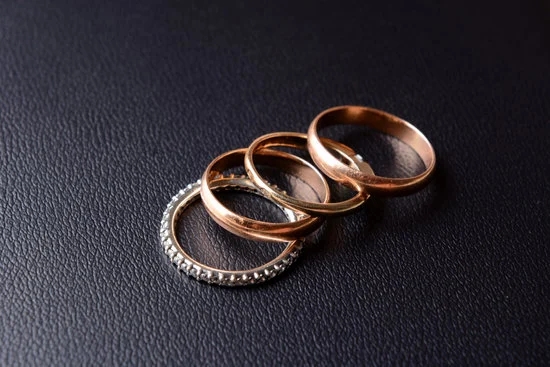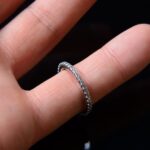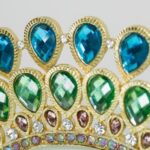Who are average fine jewelry buyers? The answer to this question involves understanding the demographics, consumer behavior, shopping habits, preferences, budget, influences, and future trends of individuals who regularly purchase fine jewelry. In this article, we will delve into the profile of the average fine jewelry buyer and examine what drives their purchasing decisions.
The average fine jewelry buyer encompasses a diverse group of individuals from different backgrounds and lifestyles. By analyzing their age, gender, income level, and location, we can gain valuable insights into their purchasing habits. Understanding their consumer behavior and motivations for buying fine jewelry is crucial in identifying trends and preferences within this market.
In addition to exploring where they typically shop for fine jewelry and how often, it’s important to uncover their preferences when it comes to types of fine jewelry and materials. By understanding these elements of the average fine jewelry buyer’s profile, businesses can tailor their offerings to better meet customer needs. This article will also touch on how much average fine jewelry buyers typically spend on their purchases and the influences that impact their decision-making process.
Demographics
The average fine jewelry buyer can be difficult to define as they come from diverse backgrounds. However, understanding the demographics of these buyers can offer valuable insight into their preferences and behaviors.
Age and Gender
On average, fine jewelry buyers tend to fall within the age range of 30 to 55 years old, with a fairly equal distribution between men and women. While women historically make up a larger portion of fine jewelry purchases, there has been a growing trend of men purchasing fine jewelry for themselves as well as for significant others.
Income Level and Location
Fine jewelry purchases are typically made by individuals with disposable income, with many falling into the middle to high-income brackets. Geographically, urban areas tend to have a higher concentration of fine jewelry buyers due to greater access to luxury retailers and boutiques.
Diversity Within the Demographics
It’s important to note that while there are general trends in age, gender, income level, and location among average fine jewelry buyers, there is also significant diversity within this demographic. People from various backgrounds and walks of life are drawn to fine jewelry for different reasons, making it challenging to paint a clear-cut picture of who an average fine jewelry buyer truly is.
Consumer Behavior
Understanding the consumer behavior of average fine jewelry buyers is crucial for jewelers and retailers looking to effectively market their products. One factor that motivates these buyers is the emotional significance of fine jewelry. For many, buying or receiving fine jewelry represents special occasions such as weddings, anniversaries, or other milestones.
This jewelry may also hold sentimental value as an heirloom to pass down through generations. Knowing this, retailers can tailor their messaging to emphasize the emotional aspect of their pieces.
Another motivating factor for average fine jewelry buyers is the perceived value and quality of the pieces. These buyers often seek out high-quality materials like gold, diamonds, and other precious gemstones. They are willing to invest in fine jewelry because they see it as a long-term investment that holds its value over time. Retailers can leverage this by highlighting the craftsmanship and durability of their products.
Furthermore, many average fine jewelry buyers are motivated by trends and fashion. Keeping up with the latest styles and designs plays a significant role in their purchasing decisions. Whether influenced by celebrities, social media, or lifestyle magazines, these buyers are keen on owning pieces that are not only timeless but also on-trend. Recognizing this trend-conscious approach can guide retailers on what types of inventory to stock and how to promote their products effectively.
| Motivating Factors | Impact |
|---|---|
| Emotional significance | Special occasions and sentimental value drive purchases |
| Perceived value and quality | Investment mindset leads consumers to seek high-quality materials |
| Trends and fashion | Consumers are influenced by latest styles and designs when making purchases |
Shopping Habits
The average fine jewelry buyer is someone who appreciates quality craftsmanship, luxury, and the beauty of precious metals and gemstones. When it comes to shopping for fine jewelry, these buyers often have specific preferences and habits.
One of the most common places where average fine jewelry buyers shop is at traditional brick-and-mortar jewelry stores. These establishments offer a hands-on experience, allowing buyers to personally examine pieces and receive personalized assistance from sales professionals. Online retailers have also become increasingly popular among fine jewelry buyers due to the convenience they offer. According to a survey by Statista, 30% of fine jewelry consumers in the United States made their last purchase online.
As for the frequency of their purchases, this tends to vary depending on individual preferences and occasions. However, many average fine jewelry buyers tend to make significant purchases during milestone events such as weddings, anniversaries, or birthdays. They also often acquire pieces to add to their collection over time.
Another notable trend among average fine jewelry buyers is the tendency to seek out unique and custom-made pieces rather than mass-produced items. This reflects their desire for individuality and exclusivity in their purchases.
| Shopping Habits | Data |
|---|---|
| Traditional brick-and-mortar stores | Preferred for hands-on experience and personalized assistance |
| Online retailers | Becoming increasingly popular for their convenience |
| Purchase Frequency | This tends to vary based on individual preferences and occasions; significant purchases are made during milestone events such as weddings, anniversaries, or birthdays. |
| Trend towards unique & custom-made pieces | The desire for individuality & exclusivity drives them towards seeking unique & custom-made pieces rather than mass-produced items. |
Preferences
When it comes to preferences, it’s essential to understand the most popular types of fine jewelry and materials that the average fine jewelry buyer tends to gravitate towards. This can provide valuable insight into consumer behavior and help businesses tailor their offerings to meet these preferences.
Types of Fine Jewelry
The average fine jewelry buyer often leans towards timeless pieces that never go out of style. Classic options such as diamond stud earrings, solitaire necklaces, and tennis bracelets are among the top choices for many buyers. These pieces are versatile, elegant, and can easily transition from day to night, making them attractive to a wide range of consumers.
Preferred Materials
Gold and silver have always been popular choices for fine jewelry buyers due to their longevity and timeless appeal. However, there has been a growing trend towards alternative materials such as platinum, rose gold, and even titanium. These modern materials offer a fresh take on traditional jewelry designs and cater to the evolving tastes of consumers.
Customization
In addition to classic pieces, customization is also gaining traction among average fine jewelry buyers. Personalized jewelry allows individuals to create unique pieces that hold sentimental value. Whether it’s custom engraving, birthstone accents, or personalized pendants, consumers are increasingly seeking one-of-a-kind items that reflect their individuality and story.
Understanding these preferences can help businesses in the fine jewelry industry adapt their offerings to better suit the needs and desires of the average fine jewelry buyer.
Budget
When it comes to the budget of average fine jewelry buyers, it is important to consider that this demographic varies in terms of their disposable income and financial priorities. The amount an individual spends on fine jewelry can be influenced by a variety of factors, including personal taste, social status, and cultural norms. Despite these variations, there are some general trends that can provide insight into how much average fine jewelry buyers typically spend.
Here are some key points to consider regarding the budget of average fine jewelry buyers:
- According to market research, the average fine jewelry buyer spends between $500 to $3000 on a single piece of jewelry.
- However, it is important to note that there is a significant range within this average, with some buyers spending less than $500 and others splurging on pieces that cost well over $3000.
- It is also worth mentioning that special occasions such as weddings or anniversaries tend to drive higher spending among average fine jewelry buyers, while everyday purchases may fall towards the lower end of the spectrum.
Understanding the typical budget of average fine jewelry buyers can help industry professionals tailor their products and marketing strategies to better meet the needs and expectations of this consumer demographic. Additionally, it highlights the importance for retailers to offer a diverse range of price points in order to cater to different segments within this customer base.
Influences
When it comes to purchasing fine jewelry, the average buyer is influenced by a variety of factors, including celebrities, social media, and other external influences. Many individuals look up to celebrities as style icons, making them highly influential in the fine jewelry market. Whether it’s a stunning red carpet appearance or an endorsement of a particular brand, celebrities play a significant role in shaping the preferences and purchasing decisions of the average fine jewelry buyer.
In today’s digital age, social media has also become a powerful influencer in the world of fine jewelry. Platforms like Instagram and Pinterest have created a space for individuals to showcase their personal style and connect with brands and influencers. As a result, many average fine jewelry buyers are exposed to stunning pieces through social media, which can ultimately influence their purchasing decisions.
Aside from celebrities and social media, other factors such as cultural trends, fashion publications, and lifestyle influencers also play a key role in shaping the preferences and choices of average fine jewelry buyers. These external influences often drive consumers to seek out specific styles or materials that are currently trending in the market. With these various influences at play, it’s clear that the purchasing decisions of average fine jewelry buyers are shaped by a wide range of external factors.
Future Trends
The future trends in the fine jewelry industry are constantly evolving as consumer preferences and habits change. Understanding the evolving mindset and habits of the average fine jewelry buyer is crucial for businesses to stay relevant and competitive in the market. Here are some key future trends to watch out for:
- Sustainable and ethical practices: More than ever, average fine jewelry buyers are becoming conscientious about the environmental and ethical impact of their purchases. They are increasingly seeking jewelry made with sustainable materials and ethical labor practices. As a result, businesses that prioritize sustainability and ethics in their production processes will likely see an increase in demand from these consumers.
- Personalization: The average fine jewelry buyer is showing a growing interest in personalized pieces that tell a unique story. Whether it’s custom engravings, birthstone accents, or initials, consumers are looking for ways to make their jewelry pieces more meaningful and personal. Businesses that offer customizable options will be well-positioned to cater to this trend.
- Online shopping: With the rise of e-commerce, more average fine jewelry buyers are turning to online platforms to make their purchases. This trend is expected to continue growing as consumers seek convenience, a wider selection, and competitive pricing online. Businesses that invest in user-friendly online platforms and digital marketing strategies will be able to capture this expanding market.
As these future trends unfold, businesses must adapt their strategies to meet the evolving needs of the average fine jewelry buyers. By understanding these trends, businesses can position themselves for success in an ever-changing market landscape.
Conclusion
In conclusion, the average fine jewelry buyer is typically a middle-aged individual with a moderate to high income level, who values quality and craftsmanship. They are often motivated by special occasions such as anniversaries or birthdays, and are willing to invest in pieces that hold sentimental value. This demographic tends to be more prevalent in urban and affluent areas, but the trend of online shopping has made fine jewelry more accessible to a wider audience.
When it comes to shopping habits, the average fine jewelry buyer tends to frequent luxury retailers and boutique stores, although there is also an increasing interest in ethical and sustainable brands. In terms of preferences, classic pieces such as diamond earrings or pearls remain popular choices, while there is a growing demand for unique and personalized designs.
The average fine jewelry buyer also tends to keep up with celebrity trends and is influenced by social media platforms when making purchasing decisions.
As for future trends in the industry, it can be expected that the average fine jewelry buyer will continue to prioritize authenticity and integrity in their purchases. With a heightened awareness of ethical practices and sustainability, there will likely be a shift towards eco-friendly materials and transparent sourcing.
Overall, understanding the profile of the average fine jewelry buyer will allow industry professionals to cater to their specific needs and preferences more effectively. By keeping up with evolving consumer behavior and market trends, the industry can continue to thrive and innovate for years to come.
Frequently Asked Questions
What Demographic Buys the Most Jewelry?
The demographic that buys the most jewelry varies depending on the type and price range of the jewelry. Generally, women are the primary consumers of jewelry across all age groups, with men also making up a significant portion of the market for luxury and high-end jewelry.
Younger consumers tend to prefer more affordable, trendy pieces, while older consumers may lean towards classic and timeless designs.
What Is the Target Audience for Handmade Jewelry?
The target audience for handmade jewelry is typically individuals who appreciate unique, artisanal pieces and have an interest in supporting small businesses and independent artisans. This can include people who value craftsmanship, creativity, and individuality in their accessories.
Handmade jewelry often appeals to those looking for something distinct from mass-produced items and are willing to pay a premium for one-of-a-kind or limited edition pieces.
Where Do You Get the Most Money Selling Jewelry?
The best place to get the most money selling jewelry can depend on various factors such as the quality of the jewelry, its unique selling points, and the current market demand. Options such as high-end specialty boutiques, online platforms like Etsy or eBay, or even direct sales at craft fairs and artisan markets can all yield good returns for different types of jewelry.
Additionally, partnering with reputable jewelers or participating in auctions may also result in higher sales prices for certain pieces. Ultimately, it’s important to research and explore different avenues to determine where your specific type of jewelry will fetch the highest prices.

Welcome to my jewelry blog! My name is Sarah and I am the owner of this blog.
I love making jewelry and sharing my creations with others.
So whether you’re someone who loves wearing jewelry yourself or simply enjoys learning about it, be sure to check out my blog for insightful posts on everything related to this exciting topic!





